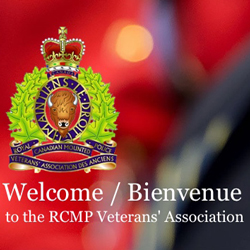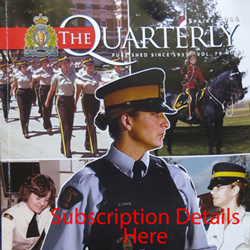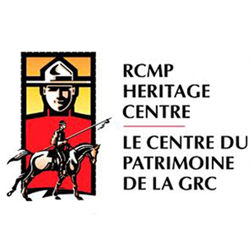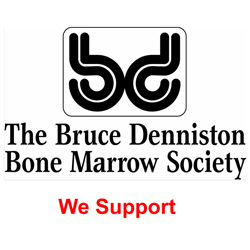The King and Queen Come to Canada

In the dark days before World War II King George VI and Queen Elizabeth sailed to Canada and also visited Washington in May of 1939 to enhance Canada and America’s resolve to support Britain should war come. Many Royals had visited Canada prior to 1939, but this visit was a special package, getting both the King and Queen. The first ever for a reigning monarch to visit Canada accompanied by his Queen. The King and Queen arrived by ship and travelled across Canada by train. To say the least, it was a “whistle stop” tour. During their tour there are Mounties galore protecting them and lining the routes as security. Four members were selected as their personal security and travelled across the country, and to Washington, with the King and Queen, Cst. R. Portelance, Cst. S. Langlois, Sgt. W.H. Williams and Cst. J.C. Coughlin. were the chosen four. Can you imagine the thrill, at the time, of being asked to be the personal escort to the King and Queen? When looking at the size of these four members, alongside the King and Queen, you can see why they were picked.


Note that two of the personal security members are holding the King’s cape and the Queen’s fur jacket. The “Depot” Chapel certainly looks a far cry from how it looks today. No steeple and no stain glass windows on the front. On the outside it still looks like the old canteen and mess hall from the early days of the NWMP.
James Campbell Coughlin, Reg 12511, has an interesting history with the Force. Jimmy Coughlin was a man of many talents. He was the Canadian Welter Weight Boxing Champion of 1934 and he put these talents to good use in his many years as Boxing Instructor at “Depot”. He was also an “Artisan”. He designed the wrought iron gates, which welcomed all to ‘Depot’ for many years, at both the north and south entrances to the training facility. He also collaborated in the design of the steeple on the Force Chapel at “Depot” and, in 1962, painted a mural which adorns the Sergeants Mess at “Depot”. Sgt. Coughlin retired in 1962 and is buried in the “Depot” Cemetery. Coughlin Bay, Regina, Saskatchewan is named after him.
How many times did these four members have to change their uniforms and have them cleaned during their 8,000-mile journey?
Often you can see these four members in the back ground running to catch up to the Royal couple. The four of them are jammed in an open yellow convertible. One of them is often seen carrying the Queen’s fur jacket. Probably after the tour was done, they just wanted to get home, put on a pair of jeans and have a cold one.








they will be getting a dinner at another gala dinner.
The Officer Commanding “Depot” Division, Regina, Sask.—Assistant Commissioner T. H. Irvine reported in the Commissioner’s Annual Report for 1940; The work begun in 1938 has been continued most successfully and it can now be stated that the “Depot ” is a training centre which will compare, favourably with that of any police force in the world. Apart from routine matters, the most outstanding event of the year was undoubtedly that of the visit of Their Majesties, the King and Queen, to the Barracks on May 25, 1939. This was a most auspicious occasion and is dealt with at length in the accompanying report:
“Visit of Their Majesties: On the 25th May, 1939, Their Majesties, King George VI and Queen Elizabeth, arrived in Regina. In addition to making a tour of the city, visiting and attending appropriate services at the City Hall and the Provincial Legislative Building, etc., they honoured this Force by visiting the Barracks and partaking of tea in the Officers’ Mess whilst resting; at which time the R.C.M. Police Band played appropriate musical selections. A mounted escort was provided by the division, under the command of the Officer Commanding, and being composed of one other officer, Insp. W. C. Grennan, and thirty-two other ranks. The escort accompanied Their Majesties from the railway station to the City Hall, and again from the Exhibition Grounds to the Barracks. The public was not permitted entry to the Barrack grounds as the period spent there was a period of rest, but accommodation was provided for relatives of members stationed at Regina. The Royal Party was accompanied by the Prime Minister and others, and was received by Commissioner S. T. Wood.
The Officers Commanding “F” and “Depot” Divisions, Asst/Commissioners C. D. LaNauze and T. H. Irvine, were presented to Their Majesties, as were their wives, also all Officers of the two divisions and their wives. After resting, Their Majesties walked around the Square with the Commissioner, the Deputy Commissioner and the Officers Commanding “F” and “Depot” Divisions visiting the Scientific Laboratory and Chapel, and viewing the Memorial to those members killed on duty. His Majesty later expressed to the Commissioner his pleasure at being able to visit the Regina Barracks, and he spoke’ very kindly of the work performed by this Force, of which he is Honorary Commissioner. The grounds and buildings at Regina were in an excellent condition at this time and great care had been taken in the turnout of all members. One member of this division, Constable J. C. Coughlin, was selected as one of the four personal orderlies to Their Majesties for their whole tour, and two others, Corporal H. H. Radcliffe and Constable W. H. G. Nevin, were members of the Royal Train Guard detail.”

There also was amusement to be found in the dogged way Prime Minister William Lyon Mackenzie King stuck to the King and Queen, at once asserting his position as the King’s chief adviser and absorbing as much as possible of the royal couple’s popularity. At Banff Springs Hotel, the Prime Minister posed for a photo with the royal couple, and promptly had the King airbrushed out, leaving him alone with Elizabeth—a politician of genius, King also knew a star when he saw one. During her time as Queen, Elizabeth was always very popular, particularly during the war years. On walkabouts she could often be seen taking the lead ahead of the King, unusual in the Royal business. She had the outgoing personality that attracted people to her and clearly P.M. Mackenzie King was so enthralled.

During the tour, constitutional and political precedents were set almost daily. The King brought no British ministers with him, for in his realm of Canada it was appropriate for Canadian ministers only to advise him; and, according to archivist Gustave Lanctot (the tour’s official historian), when the King, having stood to attention for the playing of God Save the King at the unveiling of the National War Memorial in Ottawa, stayed at the salute for the singing of O Canada, he effectively turned a popular patriotic song into the national anthem. On the same occasion, the Queen too made history, initiating the first royal walkabout by mingling with the 7,000 Great War veterans present.

The morning of May 21, 1939, was clear and the sun shone brightly. A crowd of more than 100,000 people gathered in Confederation Square, or Connaught Square, as it was known at the time. They gathered in the streets, in the windows and on the rooftops of nearby buildings. Children even sat in trees, hoping for a glimpse of their King and Queen. An estimated 25,000 First World War veterans were gathered in the area closest to the memorial.
During the long reign of Queen Victoria (1819-1901), which spanned the decades between 1837 and 1901, Britain underwent a phase of great obsession with imperial aesthetics, which brought an unprecedented level of fussiness towards imperial ceremonies and traditions in its colonies. One of the key principles of Victorian imperial aesthetics was that everyone important should wear splendid-looking uniforms so that their rank and status was always very visually obvious. Well into the 20th century, it was common for high-ranking officials within the Canadian government, such as governors general, prime ministers, ambassadors and cabinet ministers — as well as their various aides and advisors — to don fancy uniforms during important ceremonies (which, of course, were happening all the time). The most iconic of these was the so-called Windsor Uniform, a high-collared black tunic with gold braid that was worn by almost everyone important at one time in Canada’s early years.
Clearly, Prime Minister MacKenzie King deemed the Royal visit as the appropriate time to dust off his Windsor uniform.
Just me thinking out loud here, but I wonder if Prime Minister Trudeau II has a Windsor Uniform secretly hiding in his closet waiting for just the right time to spring it upon us. Think back to his visit to India!

Prime Minister resplendent in his Windsor uniform.

King George was often referred to as the “Accidental King” due to the abdication of his brother King Edward VIII…you know the story “for the woman he loved”. It seems history unrolled as it should. During the war, King George VI became a powerful symbol of courage and fortitude for the British people. Rather than relocate his family to the safety of Canada, he remained in the United Kingdom during the Battle of Britain. He also visited his armies on several battle fronts. Moreover, George provided a model of determination in his well-known struggle to overcome the severe stammer that had afflicted him since childhood. That struggle and George’s tremendous will power are captured in the motion picture The King’s Speech (2010), which depicts his long-term relationship with the unconventional Australian speech therapist Lionel Logue and climaxes with the King’s inspiring live radio address on September 3, 1939, as Britain entered World War II.

Below are two links to the Royal visit of 1939. The first is a short one of their visit to Toronto, it starts off very dark but the lighting improves. The second is an official film by the Canadian Government Motion Picture Bureau…. who knew we had such a “bureau”? It is over an hour long and was shown after the start of World War II to enthuse Canadian support for the war effort. In this video, one of the King’s first speeches was at a dinner in Quebec City. His problems in speaking, due to his speech impediment, can be clearly seen. He is very slow in presenting his words, often referring to written notes. It has often been said that “public speaking” is one of the most feared things someone has to face. Imagine, this shy man, with a speech impediment being thrust into the position of King and having to inspire his subjects with his words.
Take the time to sit and view it. Some great shots of Canada from a long time ago, different times. The movie shows the Royal Tour from right across Canada. Newfoundland was not on the Royal visit list. It was still out there on its own governed by a Commission of Government. The Commission, appointed in 1934, consisted of seven persons appointed by the British government. For 15 years, no elections took place, and no legislature was convened. Until 1949…when Newfoundland joined confederation. The rest, as they say, is history.
Looking at the videos from todays view point, the crowds that turn out are all appropriately dressed, men in suits and wearing their fedoras, women in their Sunday best. Union Jacks, flying everywhere! The enthusiasm of the announcer who does the voice over is indicative of feelings towards the Royals at that time in history, There are no bounds to his patriotic fervour.
Strictly from a Force perspective. It is fun to view the members in Review order everywhere! Ridings crops a plenty, often used as the first line of defense, not many seem to wear full Sam Browne’s with revolvers. Motorcycle riders in Review Order wearing cloth caps…clearly no Canada Labour Code in 1939. Members blocking crowds in the rain in New Brunswick, at the back of the Royal Train wearing those old heavy rubber rain coats. I would imagine the uniforms underneath needed dry cleaning after this duty.
Unfortunately, while there is a video clip of their visit to Regina, there is no footage of their visit to “Depot”. Their stopover at “Depot” was to be a rest period. Relaxing at the Officers’ Mess. I don’t think it quite went to plan.

King George VI and Queen Elizabeth visited “Depot” Division, May 25, 1039, as part of their tour of Canada. Below are some observations of a constable who there on horseback:
A mounted troop of RCMP members served as the escort for the Royals. A member of the troop was Constable Donald St. Clair Davis, Regimental # 13041. Constable Davis had a picture of the escort formed up in front of “A” Block, which he passed along to his son, Inspector Don Davis, O.1728 (ret’d). Originally, the mounted escort were to carry lances, however rain fell and the Sergeant Major made the decision no lances were to be carried, however the escort would carry carbines. Constable Davis is the lone member on horseback, riding “Monty”, on the left of the troop. He was the lead rider when escorting the Royals.

Below is a copy the photo that Donald Davis passed along to his son. Note that rain water has pooled on the Parade Square. Who knew they had Photo Shop in 1939?

Enjoy the videos!
Ric Hall 24394/O.1330
2019-08-25



 August 29, 2019
August 29, 2019 






